Last updated: 15 May 2009
|
Last updated: 15 May 2009 |
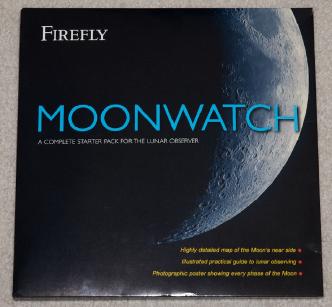 I recently located a copy of Firefly Moonwatch, a "complete starter pack for the lunar observer". The collection includes a large Moon map, a Moon phases poster, and a 192 page paperbound book observer's guide. I'll discuss each of these.
I recently located a copy of Firefly Moonwatch, a "complete starter pack for the lunar observer". The collection includes a large Moon map, a Moon phases poster, and a 192 page paperbound book observer's guide. I'll discuss each of these.
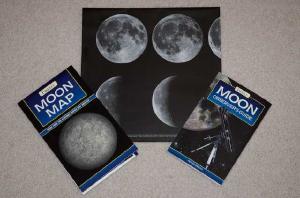
The Moon map is a large format map, folded like a road map, that contains a lot of information. Major and many minor features of the Moon's surface are marked, including manned and unmanned spacecraft on the lunar surface (as of about 2004), not that you will see these in a telescope. There is an index with map coordinates to help locate specific features on the map. The map has lunar north at the top and lunar west on the left. There is a smaller map of the lunar farside. The large map is marked every 10 degrees of latitude and longitude, but only labeled in latitude. In order to determine the longitude you have to manually count the lines from the center of the map.
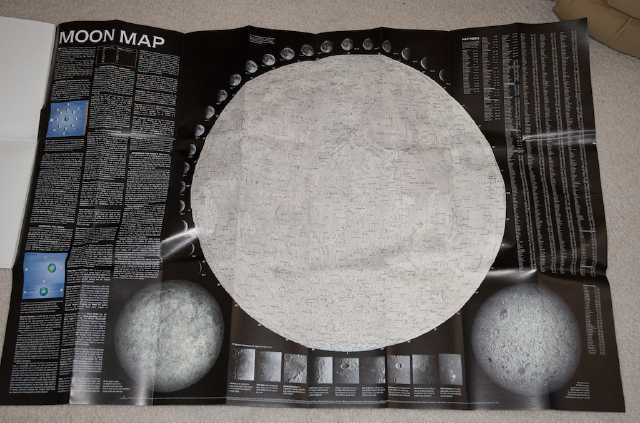
I found only a couple of usage issues with the map. First, it is not laminated, so some care will have to be taken if used during dew-ing conditions. Second, due to the large size, the map will be somewhat unwieldy to use when at the telescope. It should also be noted that the map is not oriented for views through the ETX as it shows an orientation that you see with the naked eye or through binoculars. There are not many paper maps that provide the same orientation seen in telescopes. That would require specific maps or multiple maps. However, the Firefly Moon map will be useful to locate and identify lunar features through any telescope.
The Moon poster shows the phases of the moon using high quality photographs at each day of the lunar month.
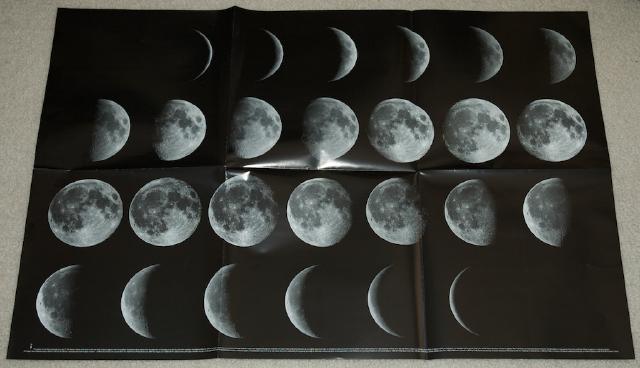
One side of the poster shows the Moon as seen from the northern hemisphere. The other side shows the Moon as seen from the southern hemisphere.
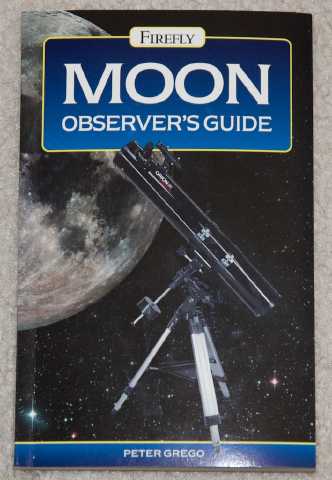 The Moon Observer's Guide by Peter Grego covers a lot of information in its 192 pages. Here is the Table of Contents:
The Moon Observer's Guide by Peter Grego covers a lot of information in its 192 pages. Here is the Table of Contents:
Introduction
Chapter 1 - Lunar geology and the Moon's features
Chapter 2 - The Moon in space
Chapter 3 - The lunar observer's equipment
Chapter 4 - Moonwatching
Chapter 5 - Recording your observations
Chapter 6 - Eclipses and occultations
Chapter 7 - The space-age Moon
Glossary
Resources
General Index
Features Index
The meat of the book is in Chapter 4, which is an excellent day-by-day description of what can be seen on the lunar surface. For each lunar day, there is a small map depicting the surface area being discussed, along with a larger map showing more details. Not all items discussed for a particular day are shown on this larger detailed map. Chapter 5 provides a good overview of both drawing and photographic techniques. The camera discussion is somewhat dated (in just five years!) as it concentrates more on using film. There is some brief discussion of digital imaging. The Resouces appendix is excellent and provides many online sources of lunar information.
I expect to use Moonwatch a lot once I get my permanent observatory (SkyShed POD). If you can find a copy (new or used in good condition), and don't already have a lunar map and book, you will find Moonwatch a valuable addition to your library.
Go back to the ETX Home Page.